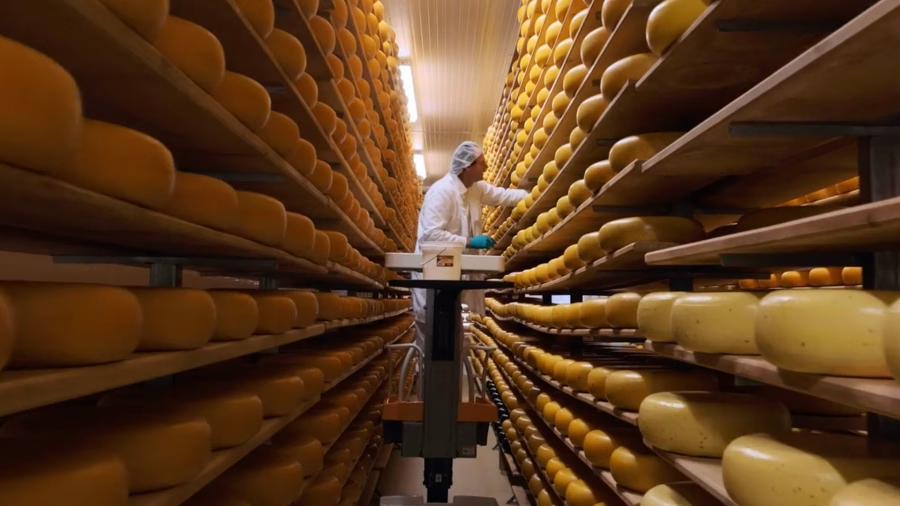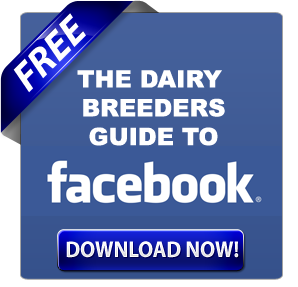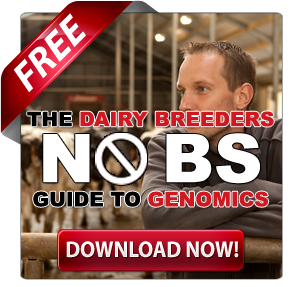Sustainable dairy farming boosts profits and benefits the environment. Ready to transform your dairy operations for a greener future?
The dairy industry stands at a crossroads in an era of environmental challenges and consumer awareness. Sustainability is imperative in shaping the future of farming. As stewards of the land and providers of essential nutrition, dairy farmers play a pivotal role in this transformation. The increasing consumer demand for sustainable products is a testament to the connection between farmers and their customers. Forward-thinking strategies conserve resources, reduce environmental footprints, and boost operational efficiency—imagine harnessing practices that turn waste into energy or use water twice as efficiently. Recycling water significantly cuts usage, and efficient feed practices reduce greenhouse gases. Converting waste to energy through biogas exemplifies energy innovation. By adopting sustainable practices, dairy farmers can safeguard the environment while maintaining their competitive edge, appealing to forward-thinking professionals eager to innovate and improve their operations.
Redefining Dairy Farming: The Intersection of Ecology and Economy
A pivotal shift is underway in the intricate world of modern dairy operations—a shift towards sustainability that intertwines economic vitality with environmental responsibility. At the core of this transformation are practices designed to mitigate impact, enhance productivity, and unlock new avenues for revenue.
Water Conservation: Water is the lifeline of any dairy farm. Innovative farms now harness technologies like water recycling systems and efficient irrigation. Imagine systems where wastewater is treated and reused, drastically reducing consumption. In California, which is leading the charge, dairy farms report up to a 30% reduction in water use, simultaneously slicing costs and conserving this precious resource.
Waste Management: Once a burdensome byproduct, manure is now a valuable resource. Farms adopt anaerobic digesters to transform waste into biogas. This approach cuts methane emissions and paves a profitable path; the biogas can power the farm and be sold to grid operators. According to the EPA’s AgSTAR program, farms that leverage digesters can boost revenues by embracing this circular economy practice.
Soil Health Improvement: The land’s health reflects the business’s health. Techniques such as rotational grazing and cover cropping rejuvenate the soil and boost forage quality and yield. Picture verdant pastures that sustain herds while their root systems draw down carbon, fortifying the earth against erosion and drought—an investment in resilience for generations.
Carbon Footprint Reduction: The carbon problem presents an opportunity. Farms can markedly shrink their carbon footprint by optimizing feed efficiency and breeding livestock with lower methane emissions. This has a compelling dual benefit: healthier animals and compliance with looming emissions regulations. Studies [Journal of Dairy Science] note a 10% decrease in emissions with these targeted nutritional strategies.
These practices redefine what it means to farm sustainably and weave financial prudence into ecological stewardship. As these examples illuminate, the path to sustainability is a journey toward better farming and a thriving, thriving future for the dairy industry.
Technological Innovations Paving the Way for Sustainable Dairy Farming
Technology is revolutionizing the sustainability of dairy farming, offering solutions that enhance efficiency while minimizing environmental impact. This is about reducing costs and making operations more eco-friendly and sustainable in the long run.
Precision Agriculture: Precision agriculture uses GPS and sensor technologies to monitor crop growth, soil conditions, and weather patterns. This data-driven approach allows farmers to apply water, fertilizers, and pesticides precisely where needed, reducing waste and the environment’s footprint.
Robotic Milking systems improve animal welfare by allowing cows to be milked when they choose, reducing stress and increasing milk yield. Additionally, robotic milking significantly reduces labor costs.
Data Analytics: Big data is a game-changer in dairy farming. With advanced analytics, farmers can manage herds more effectively, monitor health, and optimize feed efficiency. This allows for better resource allocation and operational decisions, increasing productivity and reducing environmental impacts.
Genetic Advancements: Breeding technology has advanced to allow for selecting specific traits that enhance sustainability, such as improved feed conversion rates and disease resistance. These genetic improvements can drastically reduce the resources needed per unit of milk produced, contributing to the industry’s lower carbon footprint.
By integrating these technologies, dairy farmers can meet current demands and align with future sustainability goals and regulatory standards.
Profits of Change: The Integral Role of Sustainability in Modern Dairy Farming
The economic advantages of sustainable dairy farming cannot be overstated. For many in the industry, the appeal goes beyond ethical considerations—it resonates deeply with the fundamentals of good business. Sustainable practices reduce waste and optimize resource use, leading to significant cost savings. Imagine slashing your water usage by adopting recycling technologies or cutting down on electricity bills through efficient energy management systems. These changes preserve the environment and improve your bottom line, offering a promising future for your operations.
Furthermore, sustainability opens doors to premium markets. Consumers today are increasingly willing to pay more for environmentally friendly products. A Nielsen report found that sustainable product sales have increased by over 20% in recent years. This trend opens lucrative pathways for dairy farmers willing to adapt their practices and position themselves as eco-friendly brands.
Government incentives further sweeten the pot. Many regions offer subsidies, tax breaks, and grants to farms implementing sustainable methods. These incentives offset initial costs and encourage the transition to greener practices. Farmers can reduce financial risk by tapping into these resources while modernizing their operations.
The long-term viability of sustainable operations can also not be ignored. As regulatory pressures mount, especially in Europe and North America, sustainability is no longer optional—it is becoming necessary. By getting ahead of the curve, dairy operations mitigate compliance costs and secure a competitive edge in the marketplace.
Although the shift towards sustainability might initially seem daunting, its potential to enhance profitability is undeniable. The returns could be substantial economically and environmentally for those willing to invest in the future.
Future-Proofing Farming: Navigating the Challenges and Opportunities of Sustainable Dairy Practices
The horizon of sustainable dairy farming suggests a dynamic era marked by evolving regulations, shifting consumer preferences, and technological innovations. Dairy farmers stand on the brink of a transformative phase, during which adherence to upcoming regulatory changes will be crucial. Governments globally are poised to impose stricter environmental regulations to reduce greenhouse gas emissions and promote animal welfare. Compliance will be mandatory and instrumental in maintaining operational licenses and qualifying for future subsidies and tax incentives.
Consumer demand, too, is on a distinct trajectory. There’s a marked shift towards products that emphasize provenance and sustainability. Dairy products labeled “sustainably produced” command higher market prices as consumers increasingly align their purchasing decisions with environmental consciousness. This trend offers a lucrative opportunity for dairy farmers to tap into premium markets but also necessitates a commitment to transparent and certified sustainable practices.
On the technological front, the next few years are expected to witness the proliferation of innovations like blockchain for supply chain transparency and AI-driven analytics for precision farming. These technologies will enable farmers to optimize every aspect of their operations—from feed management to waste reduction—resulting in increased efficiency and reduced environmental impact. Staying abreast of these technological advances will be essential for farmers aiming to maintain a competitive edge.
The competitiveness of sustainable dairy practices globally cannot be overstated. Countries that adopt sustainable practices will dominate export markets and attract foreign investments. As international trade policies increasingly favor environmentally sound farming practices, dairy farms must innovate consistently to match global standards and expand their market reach.
In summary, the path forward for dairy farmers is clear yet challenging. Anticipated changes will require agility and a proactive approach. By preparing for regulatory shifts, embracing consumer trends, and integrating emerging technologies, dairy farmers can ensure long-term sustainability and profitability, securing their place in a competitive global landscape.
The Bottom Line
The essence of sustainable dairy farming lies at the intersection of ecological responsibility and economic viability. As we’ve explored, incorporating water conservation, efficient waste management, and carbon footprint reduction into daily operations benefits the environment and enhances farm productivity and profitability. Integrating technology like precision agriculture and data analytics furthers these achievements, promising a future where dairy farming thrives on innovation.
We urge you, our valued readers, to reflect on how adopting sustainable practices could transform your operations. Embrace these changes as a compliance requirement and a genuine opportunity to enhance your farm’s resilience and market competitiveness. Together, let’s pave the way for a brighter, more sustainable future in dairy farming.
Key Takeaways:
- The intersection of ecological practices and economic viability is crucial for the future of dairy farming.
- Innovations such as precision agriculture and data analytics are reshaping sustainable dairy farming.
- Sustainable practices present economic benefits, including cost savings and access to premium markets.
- The future of dairy farming will be influenced by changing consumer demands and evolving regulations.
- Committing to sustainability ensures long-term success and competitiveness in global markets.
Summary:
Dairy farming stands at a pivotal point where ecological responsibility meets economic viability, driven by consumer demands and regulatory pressures. Embracing innovations in water conservation, waste management, and carbon footprint reduction allows farmers to balance high-quality milk production with environmental stewardship. Key practices include water recycling, anaerobic digestion for waste-to-energy conversion, rotational grazing for soil health, and nutritional strategies reducing emissions by 10%. Technological advancements like precision agriculture and robotic milking enhance efficiency while cutting environmental impact. Economic incentives such as cost reductions and new market opportunities further emphasize sustainability’s critical role in the future of dairy farming, positioning it as a blend of ecological responsibility and profitability.
Learn more:
- China’s Bold Move Towards Sustainable Farming Could Transform Your Dairy Business
- How Dairy Farmers Can Meet Consumer Demand for Transparency and Sustainability
- World’s First Carbon-Neutral Dairy Farm: The Exciting Race to Eco-Friendly Farming
 Join the Revolution!
Join the Revolution!
Bullvine Daily is your essential e-zine for staying ahead in the dairy industry. With over 30,000 subscribers, we bring you the week’s top news, helping you manage tasks efficiently. Stay informed about milk production, tech adoption, and more, so you can concentrate on your dairy operations.







 Join the Revolution!
Join the Revolution!




